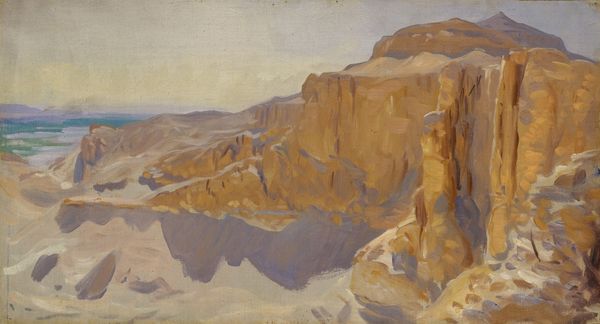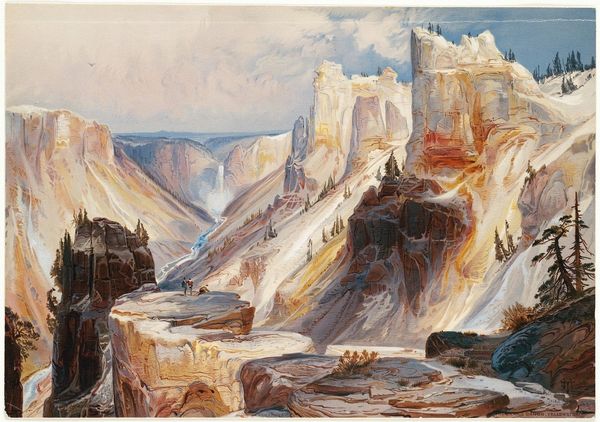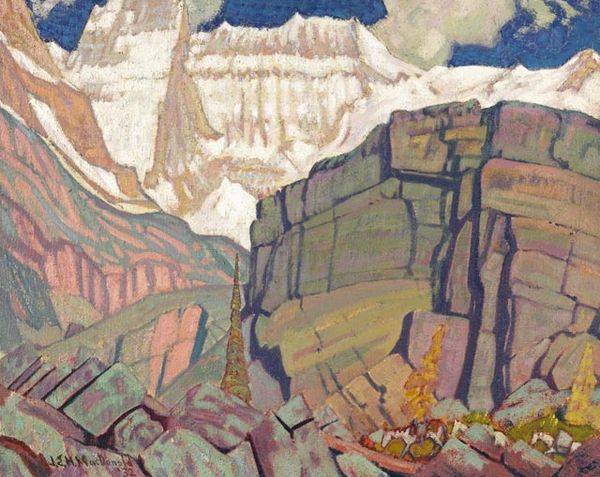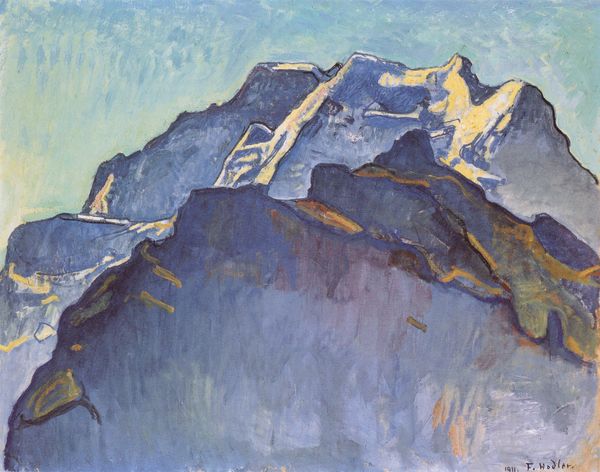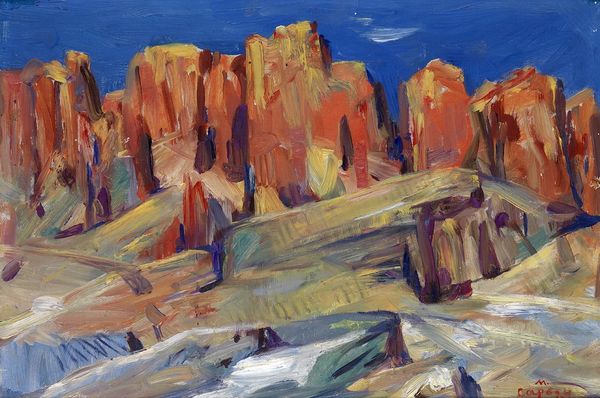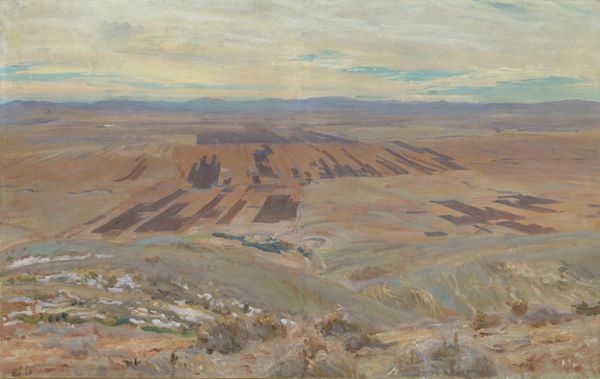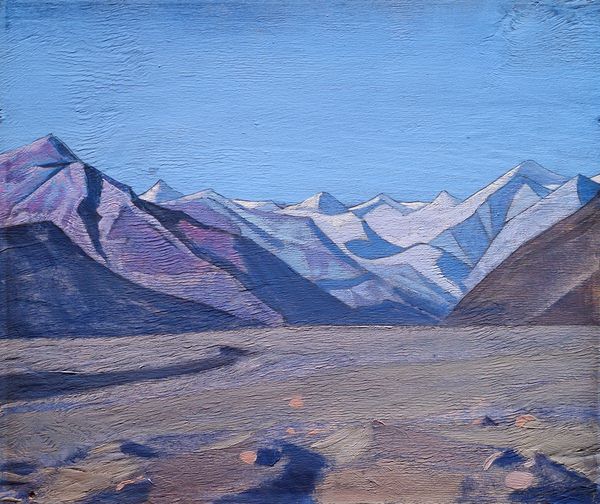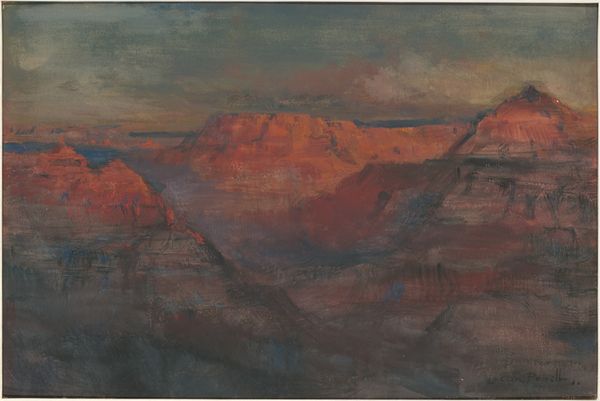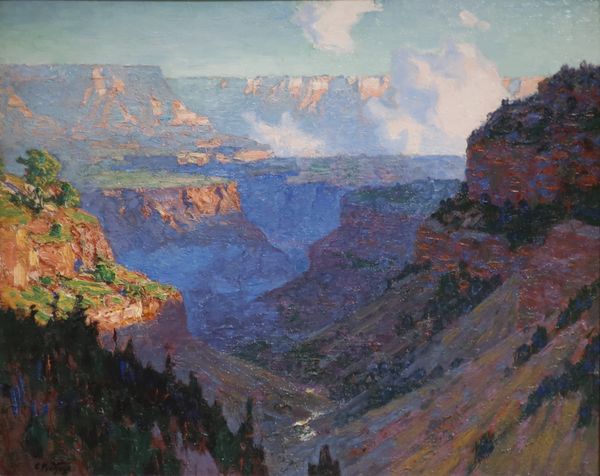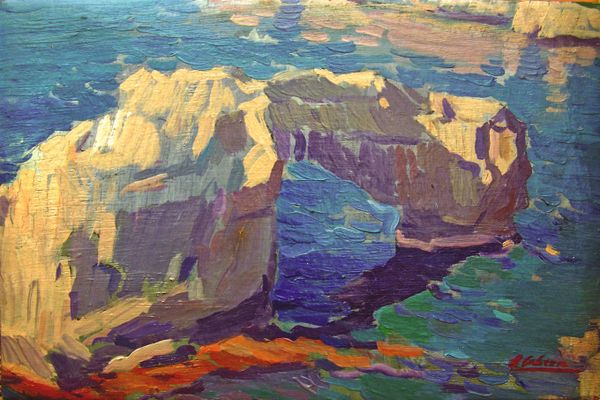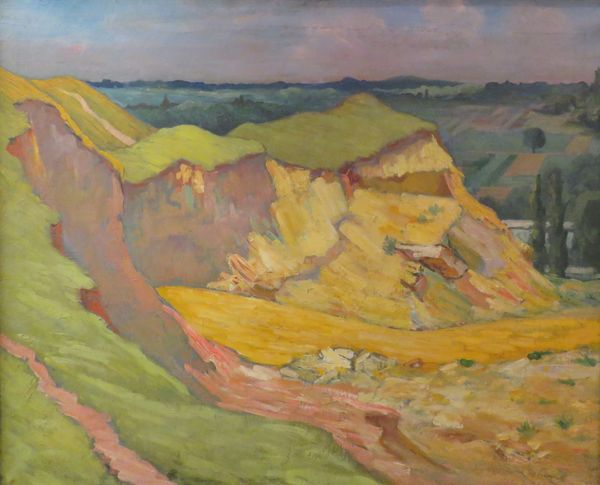
Dimensions: 40 x 29 15/16 in. (101.6 x 76.04 cm) (sight)47 1/2 x 37 3/8 in. (120.65 x 94.93 cm) (outer frame)
Copyright: No Copyright - United States
Editor: Arthur Wesley Dow’s oil on canvas painting, “The Destroyer,” created circa 1911 to 1913, presents a monumental landscape. The sheer scale of the rocks, depicted in bold, almost overwhelming brushstrokes, is quite dramatic! What sociocultural reading would you propose? Curator: The title "The Destroyer," paired with these forceful brushstrokes, resonates deeply within the context of early 20th-century anxieties. We are talking about a moment where industrialization and urbanization were dramatically reshaping the American landscape. Dow’s choice to paint this vista through an almost Expressionist lens speaks to his understanding of landscape painting and its role in contemporary discourse about the environment and expansion. What does "destruction" signify here? Editor: I guess I was so struck by the immensity of it all that I hadn't focused on the implications of the title! Does this perspective challenge traditional, more romanticized views of the American West? Curator: Absolutely! While landscape painting had often served to celebrate manifest destiny and the "taming" of the wilderness, Dow’s "The Destroyer" offers a counter-narrative. Instead of a harmonious vision, we see a landscape actively being reshaped, perhaps even violated. This challenges the myth of pristine wilderness and forces us to confront the destructive forces inherent in unchecked progress. Considering Dow’s positionality, how does that play into the reading? Editor: As a painter and printmaker associated with the American Arts and Crafts movement, maybe he critiqued industrialization's impact on nature and traditional craft? The bold geometry clashes a bit with craft. Curator: Precisely. Dow found inspiration in Japanese art. The movement valued simplicity, handcraftsmanship, and a reverence for nature – all elements potentially at odds with the destructive potential suggested in this painting. Reflecting on Dow’s other works, can we situate "The Destroyer" within the arc of his creative output? Editor: Looking at it now, it is not just a landscape but an assertion, maybe a warning. I wouldn’t have considered those readings initially. Curator: That's the power of engaging with art through multiple lenses! We are unearthing layers of meaning, connecting visual elements to broader historical and social forces.
Comments
minneapolisinstituteofart almost 2 years ago
⋮
Dow traveled the American Southwest in 1911 and 1912, documenting the Grand Canyon. His unusual painting style fused an appreciation for Japanese woodblock prints—gained from his days as a curator of Japanese art in Boston—with the simplicity of the American Arts and Crafts movement. In this work, his use of color and visible brushstrokes emphasizes the immensity of the vast, exotic landscape of the Southwest.
Join the conversation
Join millions of artists and users on Artera today and experience the ultimate creative platform.
